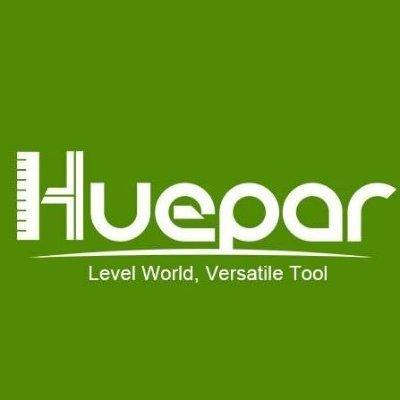Understanding Laser Levels
Types of Laser Levels
Laser levels come in several forms, each suited for different tasks. The main types include:

- Dot lasers: Emit single or multiple dots on surfaces. Ideal for simple transfer of points from one wall to another.
- Line lasers: Cast a straight line along a surface. Perfect for ensuring level lines when hanging cabinets or laying tiles.
- Rotary lasers: Project a 360-degree line around a room. Used for large-scale projects like grading and excavating.
- Combination lasers: Combine features of dot, line, and rotary lasers. They offer versatility for multiple applications.
Each type of laser level has specific use cases, and understanding their differences is key to selecting the right tool for your project.
How Laser Levels Work
Laser levels function by projecting a laser beam that provides a 'level line' visible on a surface. This line serves as a straight reference point. When the device is switched on, a laser diode emits a beam. This beam passes through a lens or a set of optics. These optics shape the beam into a line or a dot. A level laser usually includes a pendulum or other mechanism. This mechanism keeps the beam level even if the device is on an uneven surface. Some advanced models use electronic sensors to maintain accuracy. The tool is often fixed to a tripod or mounted on a wall. This ensures stability while the laser does its job. It's important to make sure the laser level is set correctly. If not, the measurements could be wrong. This would affect the accuracy of the construction work. That's how laser levels help with precise measurements and alignment in construction.
Benefits of Using Laser Levels in Construction
Laser levels have revolutionized construction with many benefits. First, they enhance accuracy, helping ensure structures are level and plumb. They also speed up setup for tasks like alignment and layout. The precision they offer reduces errors and rework, saving time and costs. Their ease of use makes complex projects simpler and more efficient. Finally, they improve safety by reducing the need for climbing to take measurements. In summary, laser levels are vital tools in modern construction.
The Advancement to 3D Laser Levels
What are 3D Laser Levels?
3d laser levels are cutting-edge tools used in construction. Unlike traditional levels that project a single line, 3D lasers cast multiple lines to map a three-dimensional layout. This forms a precise “crosshair” on surfaces, allowing users to level and align objects in all planes. They are perfect for jobs requiring high accuracy, such as installing pipes, fittings, or detailed interior design elements. 3D laser levels are essential for complex projects. These projects demand exact measurements in height, width, and depth.
Differences Between 3D, Cross Line, and 4D Laser Levels
- 3D Laser Levels project lines on all three axes (X, Y, and Z), creating a full room layout.
- Cross Line Laser Levels emit cross lines (horizontal and vertical) but do not provide depth (Z axis).
- 4D Laser Levels offer the same functions as 3D models but with added rotation, for full 360-degree coverage.
Applications of 3D Laser Levels in Modern Construction
3d laser levels have revolutionized many building tasks. They are used to plan and guide with high precision. For example, architects use them to set out floor plans quickly and accurately. Contractors can install walls and utilities right the first time. They also help in aligning tiles, cabinets, and fixtures. Plus, 3D levels are great for laying out complex designs, like curved walls. Landscapers use them too, for setting grades and drainage systems. They ensure every part of a project aligns perfectly. In big projects, these levels speed up work and cut rework costs.
Choosing the Right Laser Level for Your Project
Features to Consider When Selecting a Laser Level
- Accuracy: Look for levels with high precision, crucial for flawless results.
- Range: Choose a level with a suitable range for your project's size.
- Durability: Opt for robust construction that withstands tough conditions.
- Self-Leveling: Check if the level automatically aligns for ease of use.
- Battery Life: Select one with long battery life to avoid frequent charging.
- Visibility: Ensure the laser is bright enough to see under various lighting.
- Mounting Options: Consider levels with versatile mounting for different jobs.
- Additional Features: Some levels come with Bluetooth or slope functions.
Tips for Using Laser Levels Effectively
- Begin with a plan: Before using your laser level, map out what needs measuring.
- Keep it steady: For accurate lines, ensure your laser level is on a stable surface.
- Calibrate frequently: Regular calibration maintains precision.
- Protect your eyes: Always wear safety glasses to guard against laser exposure.
- Use indoors for best results: Laser levels are more visible without direct sunlight.
- Clean the tool: Keep the lens clean for clear, sharp lines.
- Check the battery: A full charge ensures reliable performance.
- Learn your device: Know the features of your laser level for optimal use.
Safety Precautions When Working with Laser Levels
When handling laser levels, safety is key. Here are simple safety tips:
- Always read the manual before use.
- Wear proper eye protection to guard against laser exposure.
- Do not aim the laser at others or yourself.
- Use the laser in well-lit areas to see the beams clearly.
- Keep the device away from children.
- Check for a secure setup to prevent falls.
- Avoid direct sun exposure, which can overheat the device.
By following these guidelines, you can ensure a safe working environment while using laser levels.









